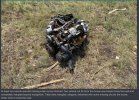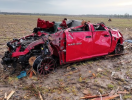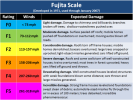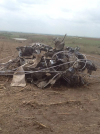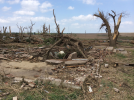WeathermanLeprechaun
Member
Pretty beastly supercell, but i think radar bias wins this thing over for a lot given its extremely impressive VROT several times throughout the tornado's lifetime. I think this tornado peaked probably in the intense (EF3) range but I'm unsure about any higher then thatI have seen literally nobody mention the Ashby Nebraska EF2 from earlier this year yet and that is surprising. That thing completely derailed numerous train cars and the locomotive itself of a very long train but it was not included anywhere in the official survey.
I don’t know what the specifics of that one are but it would be very nice if someone could get on that. I don’t have the math skills to figure it out myself.
And figure out if that one would be worthy of an upgrade.
The locomotive itself weighed 220 TONS. 420k pounds. and it was knocked over by that wedge. Someone please get me the wind speeds for that i’d love to see it. I'm watching a youtube video going over it.
That locomotive alone was Around double the weight of the fully loaded grain car’s derailed by the enderlin tornado that were rated EF5.
By all metrics the Ashby Nebraska tornado should also be rated EF5 if this study and this science is to be adhered too.
I'm just gonna say it too the Ashby Nebraska wedge IS an EF5 for me based on this info.
Scratch that, after watching a video I noticed a few things that may poke some holes in this. An electrical box of some kind near by the train looked to be completely undamaged and a few tree’s in the area had less than impressive damage. So, not quite so airtight.
But still extremely impressive and worth doing the calculations for.

